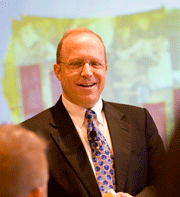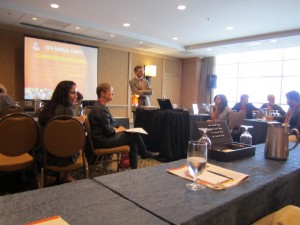
Mr. Mark Golden
Note to Business Leaders: The Arts Deserve More Than a Nod From Your Philanthropic Budget
Posted by Jul 15, 2014

Mr. Mark Golden
Art groups, whether visual or performing arts groups, come hat in hand to our businesses every day. Those of us who feel extraordinarily generous shell out some funds for a listing in their program or catalogue, or sponsor a performance or program. We often take this from our donations budget, which in order to be tax deductible expense, has to be below 10% of our net profit. This money, of course, is taken away from other needs of the philanthropic budget which is a small part of even the most socially responsible business list of expenses.
It may make you feel really good, but just consider what you could do to benefit your business if you started to allocate some money for the arts from your Marketing budget, or even your HR Development budget (now these are real budgets, not based on your net profit but a significant portion of your gross sales). Let’s call it enlightened self-interest!
The business community has been rocked by the speed of change. We recognize the value of higher tech solutions to our organizations, but it is clear that there is an even greater urgency for creative, innovative thinking that comes from training in the arts. Whether it’s corporate training in problem solving, diversity, performing in public, change management–businesses are recognizing that our new employees, so well versed in their technical fields, lack some of the basic requisite skills we need in this new environment.
Read More




 Sarah Zuckerman
Sarah Zuckerman






















